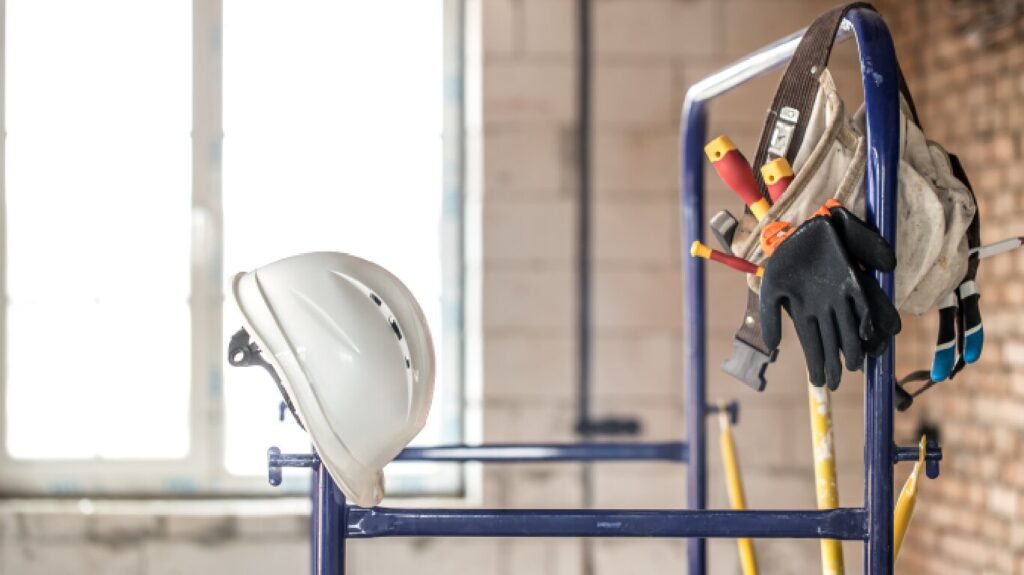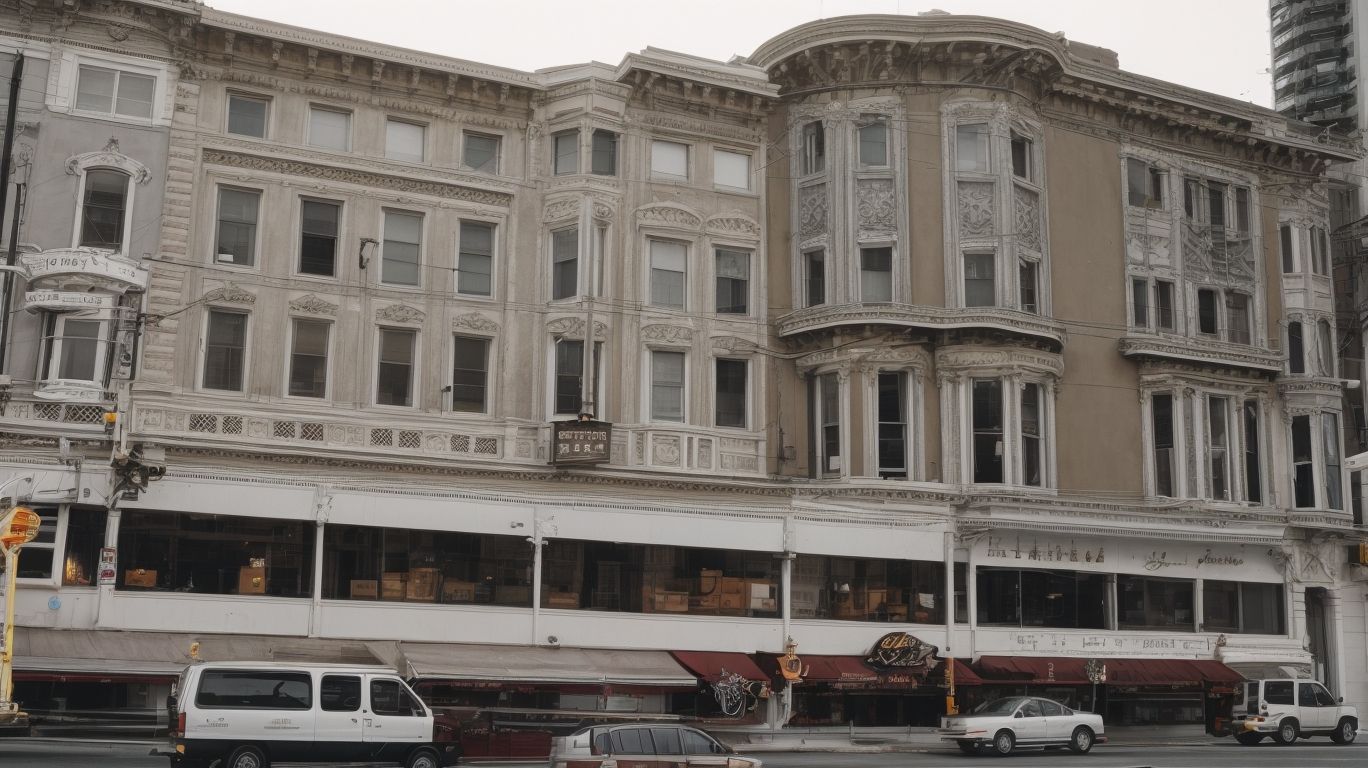
Compliance Checklist for Soft-Story Retrofit Projects
Soft-story buildings are vulnerable to collapse during earthquakes due to their open ground floor spaces, such as parking garages. This article will discuss the importance of retrofitting these buildings, the dangers of not doing so, and a compliance checklist for such projects.
Each step of the retrofitting process will be explored, from identifying the building type to obtaining final inspection and certification. The article will also cover the typical timeline for completing a soft-story retrofit project. If you’re interested in learning more about this process, keep reading!
What is a Soft-Story Retrofit?
A Soft-Story Retrofit is a structural reinforcement or modification process implemented to enhance the seismic resilience and stability of buildings with soft, weak, or open-front stories.
This retrofitting process is a crucial measure to ensure the structural integrity of buildings in high seismic risk areas. By strengthening the weak points, such as ground-level parking or commercial spaces with large windows, buildings become more resilient to potentially catastrophic seismic events.
It plays a significant role in complying with engineering analysis standards and codes, thereby contributing to the overall safety and security of occupants and surrounding areas.
Why is a Soft-Story Retrofit Necessary?
A Soft-Story Retrofit is essential due to the heightened seismic vulnerability and structural integrity concerns associated with buildings lacking adequate reinforcement in their soft, weak, or open stories.
This vulnerability poses significant risks in the event of an earthquake, potentially leading to structural damage, collapse, and life-threatening hazards for occupants.
Non-compliance with building codes further exacerbates these risks, leaving structures more susceptible to seismic events.
Without the necessary retrofit measures, the structural integrity of these buildings remains compromised, underscoring the urgent need for proactive intervention to mitigate potential harm and ensure the safety of residents and properties in at-risk areas.
What are the Risks of Not Retrofitting a Soft-Story Building?
Failing to retrofit a Soft-Story building exposes it to significant risks, including heightened seismic vulnerability, potential enforcement actions, and increased scrutiny during inspections.
The seismic vulnerability of a Soft-Story building that hasn’t undergone retrofitting can lead to catastrophic consequences in the event of an earthquake, posing a threat to the safety of occupants and neighboring properties.
Failing to address retrofit requirements can result in enforcement actions, such as fines or mandatory retrofit orders, further straining the building owners financially. During inspections, the building’s compliance with seismic retrofitting regulations comes under intense scrutiny, impacting its credibility and potentially leading to limitations on its usage or occupancy.
What is a Compliance Checklist for Soft-Story Retrofit Projects?
A Compliance Checklist for Soft-Story Retrofit Projects serves as a comprehensive guide to ensure adherence to relevant building codes, obtain necessary permits, and facilitate compliance with local authorities throughout the retrofit process.
This checklist is an essential tool for project managers, engineers, and architects. It outlines the specific requirements and steps necessary to address the vulnerabilities associated with soft-story buildings.
By systematically addressing structural deficiencies and ensuring seismic resilience, the checklist plays a crucial role in enhancing the safety and stability of buildings. It provides a framework for aligning with the seismic retrofit ordinances and regulations, thereby supporting the overall success of the retrofit project within the context of the local jurisdiction.
Identify the Building Type
Identifying the specific building type is the initial step in the Compliance Checklist for Soft-Story Retrofit Projects. This determines the applicable retrofit requirements and strategies based on the structural characteristics.
This process involves a thorough examination of the building’s construction materials, design features, and vulnerabilities. By understanding the unique traits of the building type, project teams can tailor retrofit approaches, ensuring that the solutions address diverse project requirements.
Integrating relevant keywords such as building occupancy, construction era, and structural system within the Compliance Checklist provides a comprehensive context for determining the most suitable retrofit measures. This targeted approach aligns the retrofit strategies with the specific needs of the building, optimizing the effectiveness of the overall retrofit process.
Determine the Applicable Codes and Standards
Determining the applicable building codes and seismic retrofit standards is crucial within the Compliance Checklist for Soft-Story Retrofit Projects, ensuring alignment with regulatory requirements and industry best practices.
This process involves thorough research to understand the specific requirements for the location and type of building being retrofitted.
Adhering to these codes and standards not only ensures the safety and stability of the structure but also helps in obtaining necessary permits and approvals.
The Compliance Checklist acts as a comprehensive guide, outlining each step to be taken in accordance with the applicable codes.
It plays a crucial role in maintaining the integrity and quality of the retrofit project, ultimately contributing to the overall resilience and safety of the community.
Obtain Necessary Permits
Obtaining the requisite permits from local authorities is a pivotal aspect of the Compliance Checklist for Soft-Story Retrofit Projects. This ensures legal compliance and regulatory adherence throughout the retrofit process.
This crucial process involves thorough research and understanding of the specific requirements and regulations set forth by local governing bodies.
By obtaining these permits, project managers and developers can navigate the intricate maze of regulatory frameworks with ease, knowing that they have secured the necessary approvals for their construction activities.
Integrating the pertinent keywords within the permit applications helps to streamline the review process and ensures that all aspects of the project are in alignment with the local building codes and regulations.
Hire a Qualified Engineer
Engaging a qualified structural engineer is an integral step in the Compliance Checklist for Soft-Story Retrofit Projects. This ensures expert oversight, engineering analysis, and compliance with professional standards.
Engineers play a crucial role in conducting thorough engineering analysis to assess the structural vulnerabilities of a building. This helps guide retrofit decisions to meet necessary safety requirements.
Their expertise in integrating seismic-resistant design principles and local building codes ensures that the retrofitting process aligns with the highest standards. A qualified engineer provides valuable insights and recommendations for the implementation of cost-effective and durable solutions, contributing significantly to the success of the overall retrofit project.
Conduct a Structural Evaluation
Conducting a comprehensive structural evaluation forms a critical component of the Compliance Checklist for Soft-Story Retrofit Projects, enabling informed decision-making and engineering analysis.
This evaluation involves a thorough assessment of the building’s structural elements, such as beams, columns, and foundations, to determine their capacity to resist seismic forces.
It is essential for guiding retrofit strategies, ensuring the structural integrity of the building, and safeguarding its occupants during a seismic event. By integrating factors such as material properties, building configuration, and existing load capacities, the evaluation provides valuable insights that inform the design and implementation of effective retrofit measures.
Develop a Seismic Retrofitting Plan
Developing a comprehensive seismic retrofitting plan is a fundamental requirement within the Compliance Checklist for Soft-Story Retrofit Projects. This plan outlines the strategic approach to enhancing building resilience and safety.
This plan plays a critical role in guiding construction activities to ensure that necessary measures are implemented for mitigating seismic risks. It integrates essential safety guidelines, structural evaluations, and engineering specifications to provide a roadmap for strengthening buildings against potential earthquakes.
By addressing key considerations such as foundation reinforcement, structural framing enhancements, and retrofitting methods, the plan aligns with regulatory standards and best practices to safeguard occupants and assets. Its systematic approach also supports the efficient execution of retrofitting projects, contributing to the overall resilience of structures in high-seismic-risk areas.
Obtain Approval from the City
Securing approval from the local authorities and municipal bodies is a crucial step within the Compliance Checklist for Soft-Story Retrofit Projects, validating the retrofit plans and ensuring alignment with regulatory frameworks.
This approval process plays a pivotal role in ensuring that the retrofit plans adhere to local building codes and regulations. It serves as a validation of the structural modifications and seismic upgrades proposed in the retrofit project.
Obtaining approval from the city demonstrates a commitment to compliance with safety standards and requirements specific to the local area. It also facilitates the integration of the retrofit project within the broader urban development framework, ensuring that it aligns with the overall goals and policies of the city.
Notify Tenants and Residents
Notifying tenants and residents about the impending retrofit activities is an essential component of the Compliance Checklist for Soft-Story Retrofit Projects, fostering transparency and ensuring occupant safety.
This proactive communication plays a crucial role in creating a unified and informed community. By keeping residents in the loop about the retrofit plans, the building management fosters awareness and collaboration among occupants.
Beyond promoting safety, this process also builds trust and understanding within the community. Through clear communication, residents can prepare for any temporary inconveniences and feel reassured that their well-being is a top priority. In essence, notifying tenants and residents is not just a requirement; it’s a fundamental step in fostering a harmonious and secure living environment.
Begin Construction and Retrofitting Process
Commencing the construction and retrofitting process in accordance with the approved plans marks a crucial milestone within the Compliance Checklist for Soft-Story Retrofit Projects, advancing building safety and seismic resilience.
It is imperative to understand the significance of meticulously following the Compliance Checklist, as it serves as a comprehensive guide for ensuring that all safety measures are integrated into the construction and retrofitting activities.
By adhering to the checklist, stakeholders can address potential vulnerabilities, strengthen structural integrity, and comply with the required standards. This process not only enhances the safety and resilience of the building but also aligns with regulatory requirements, contributing to the overall security of the community and minimizing risks during seismic events.
10. Obtain Final Inspection and Certification
Obtaining final inspection and certification from the local authorities signifies the successful completion of the Compliance Checklist for Soft-Story Retrofit Projects. This validates the retrofit efforts and ensures regulatory compliance.
This pivotal step in the process not only affirms the structural integrity and safety of the building, but also holds paramount significance in the preservation of public security.
The certification acts as a testament to the adherence to building codes, seismic standards, and engineering requirements. It ensures that the retrofit outcomes are in line with the necessary parameters and serves as a basis for integrating the building into the wider structural and regulatory framework. This adds a layer of assurance for stakeholders and residents.
How Long Does a Soft-Story Retrofit Project Typically Take?
A Soft-Story Retrofit project’s duration can vary based on the building’s size, complexity, and the extent of retrofitting and construction activities, typically ranging from several months to over a year for comprehensive projects.
The construction timeline for these projects is influenced by factors such as the availability of materials, workforce, and potential delays due to unexpected site conditions.
The intricacies of retrofitting older structures, including addressing existing structural elements and integrating new reinforcement, can significantly impact the project’s duration. Inspection requirements play a vital role, as the thorough evaluation of the existing structure and the completed retrofit work is crucial for ensuring compliance with building codes and safety standards, adding time to the overall project duration.




No Comments